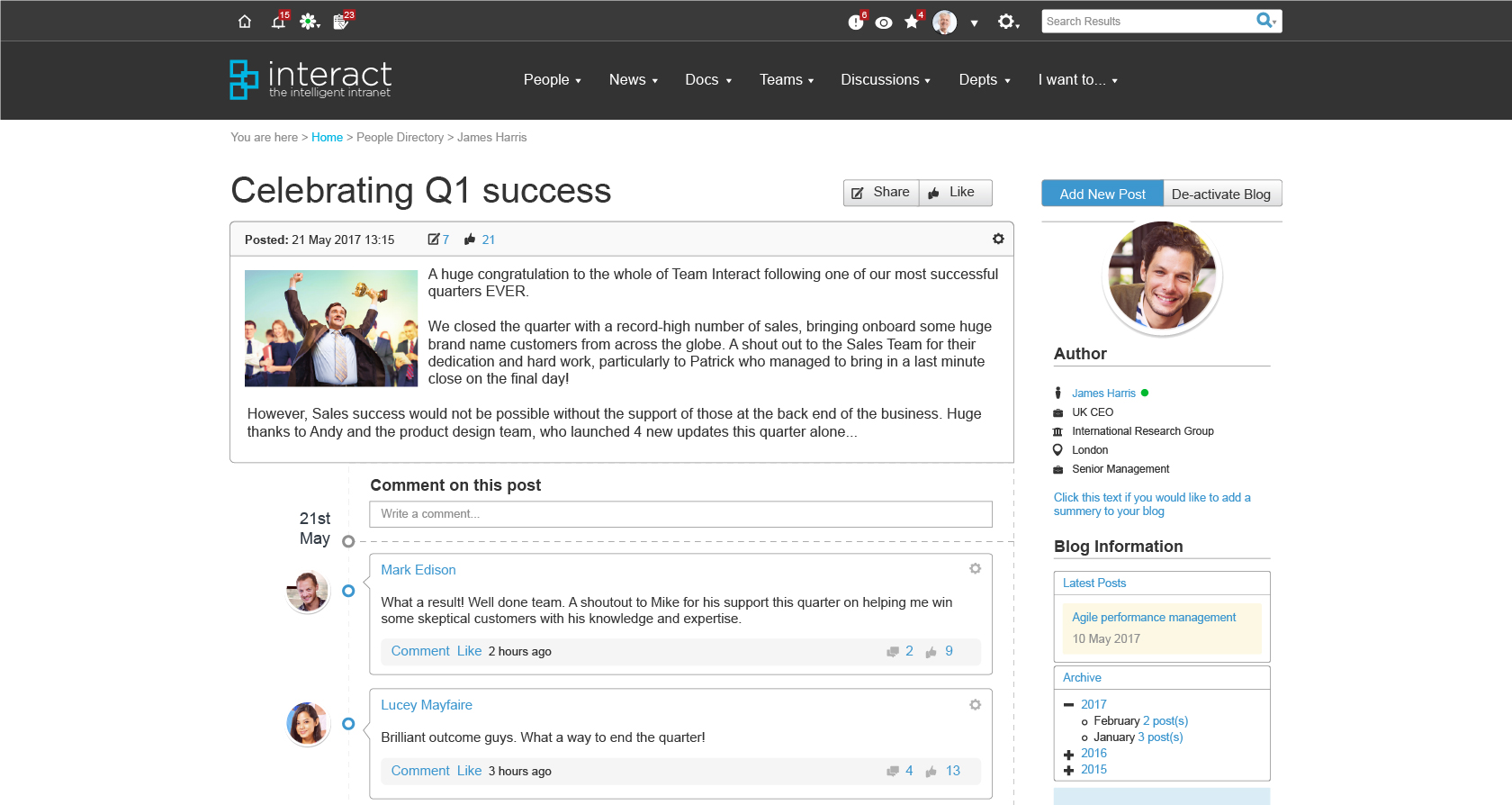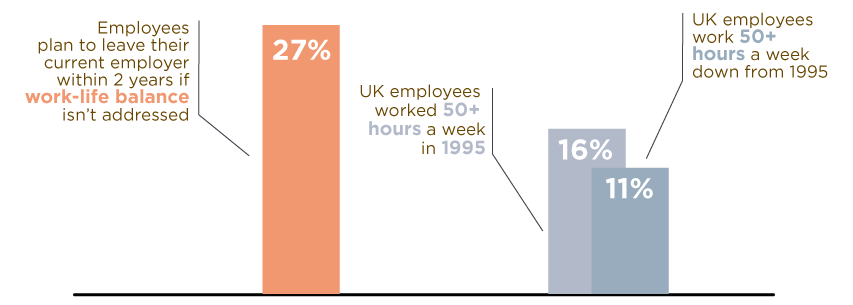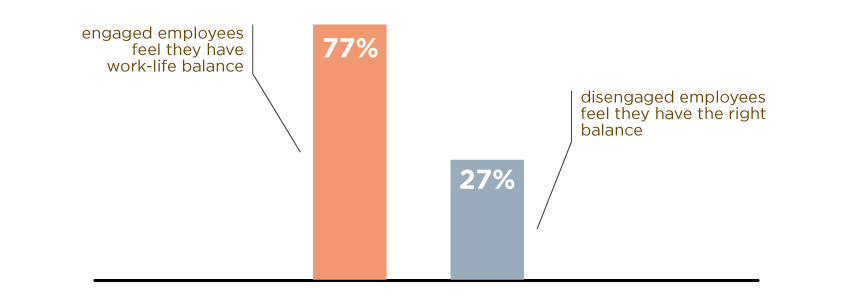Employee morale is a year-round priority
The clocks have gone forward. The nights are lighter. Q1 is over, taking ‘high turnover January‘ with it, and business is doing well. Generally, your employees seem happier and motivated, so improving staff morale isn’t a current high priority for you…right?
Wrong.
Engaging employees and boosting morale is a constant challenge and implementing a strategy that works all year round is crucial to business success.
Staff members come and go throughout any year. Employees are continually looking for the next challenge to boost their career, with the “job-hopping Millennials” projected to change roles an average of 4 times before the age of 32. According to research from Willis Towers Watson, more than one-quarter of employees permanently sit in the high-retention-risk category. In business, it is never a case of if someone will leave but a matter of when and who.
In response to statistics like this, known to many HR and internal communications professionals, employers are continually looking for new and proven ways to keep employees engaged, motivated and happy.
But why is boosting staff engagement and morale so important?
The value of keeping on top of staff morale
In short, it is proven that engaged, motivated and happy employees:
- Are more productive
- Promote a positive culture throughout the business
- Give better customer service
- Help hire better candidates
- Increase revenue and profit
When we consider that the average cost of replacing a lost employee can reach as much as 20% of annual salary in recruitment, lost productivity and time to get new hires productive, the importance of minimizing that risk is clear. That’s without even considering the impact low morale may have on your employer brand if those individuals take their disgruntlements external; or the risk associated with low-engaged employees failing to adhere to compliance or protocols, resulting in higher safety incidences or cost.
Where do we stand?
You’ve seen articles on the web about the importance of employee engagement; you’ve read statistics on the terrifying number of unhappy people in organizations across the world. You’re aware that your organization has some strategy around engaging its staff. The trouble is, you’re not sure how you add up – or if you’re doing enough to make an impact.
The reality is, unhappy and disengaged employees are inevitable in any business: 70% of the US workforce is not engaged, according to Gallup’s State of the American Workplace. No effort of increased employee engagement activity will create an environment of utter harmony, success and perfection.
However, here’s the thing: if you don’t at least try, you don’t even begin match up to the 1000s of organisations who are giving it a go. From those that simply encourage something simple like flexible working hours or the ability to telecommute, through to larger enterprises with comprehensive engagement strategies that kick in from the moment a new employee walks through the door. If you’re not even measuring employee engagement levels in your business, you may not be aware that you have red flags – or how best to address them.
So, as we enter Spring and a new quarter, here are our quick wins to implement over the next 3 months, guaranteed to boost employee morale and engagement.
New quarter, new goals, new opportunity to update your employees
Failing to communicate your organization’s vision, mission and values can lead to a significant drain on employee morale, yet 58% of global employees don’t know their company’s vision. (Source: Bollington)
Employees who are invested and believe in their company’s purpose – the 8th element of employee engagement, according to Gallup – demonstrate greater levels of satisfaction, higher morale and better returns for their business. The start of a new quarter is a great time to update your employees on recent success and the overall vision, mission and values for the next 3 months and beyond.
If you have had success in Q1 of this year, have you communicated this to your staff? Have you shared recent milestones and record-breaking statistics? Sharing success stories to the wider business is a great way to boost staff morale, particularly if decision makers or management are identifying those groups or individuals who have contributed to that success.

Offering feedback to the wider business on overall success in line with the organization’s mission gives members of every department satisfaction that their efforts are helping push the business forward – not just offering rewards and feedback to those directly involved, such as Sales or Marketing.
Some basic ways to do this can include:
- A blog by your CEO on the company intranet (ghost-written is a popular choice!)
- Departmental feedback from managers
- Company-wide town hall meetings, or virtual meetings, on a quarterly basis
Promoting transparency and trust – even when things haven’t gone well
Even if Q1 hasn’t gone as well as expected, how has this been communicated?
How your organization communicates in times of organizational change and/or uncertainty can be a real game changer in terms of respect and loyalty from your employees. Don’t shy away from the negatives. Open and transparent communication around negative outcomes can also have positive effects, promoting a culture of trust and transparency.
Left unchecked, gossip and scaremongering amongst employees can have a significant impact on employee morale throughout the business. It can also prove hugely damaging to your brand, as a business and an employer, if those individuals take their grievances onto external social media channels.
If things haven’t gone to plan or changes are on the horizon, take the time to consider the impact on employee morale and plan accordingly. Our ’10 questions to ask yourself before rolling out organizational change‘ can help you safeguard against negativity from your employees.
The international day of everything
There is a national/international day for anything and everything these days, and getting on board with the odd few can’t hurt your organizations strategy to improve employee morale. If you are reading this blog, it is likely that you missed the ‘Employee Appreciation Day’ on Friday 3rd March – but that’s not to say you’ve missed your chance!
Many millennials trawling Instagram and Snapchat will see their friends posting positive images and videos of their organization getting involved in work events, ranging from #employeemotivationday to #charitybakeday and more. The last thing you want is your employees responding with, “you’re so lucky, my company never does anything like that”.
Whilst many of these types of days seem pointless or a little over the top, you cannot underestimate the power they have. By building a little buzz around the office, they can help establish an engaged culture, a stronger employer brand and make your employees happy. As a bonus, you also gain a little bit of mass promotion from your employees as an awesome place to work, by creating brand advocates who are happy to recommend you as an employer.
Search the web for any national days up and coming that are relevant to your organization. Alternatively, www.employeemotivationday.co.uk encourages you to set your own date in the diary. Pick a date and promote this throughout your organization and make this an annual event. Simple things go a long way – perhaps incorporate some of the below into your day:
- Casual clothes
- Free lunch/breakfast
- Bake sale
- Office massages
- Walk-in/open forum for employee feedback
Be sure to share images on your company intranet to involve all members of staff, wherever they are based. You may even consider creating your own hashtag for the day – encouraging employees to share the experience on their own social media channels and creating a way for global or dispersed employee to tap into the event and get involved.
Encouraging healthy minds for a healthy workforce
There is growing recognition of the importance of individual health and wellbeing, both inside and outside of the workplace. In an age where the stigma around mental health is subsiding and more people are open to talk about how they feel, we still face the statistic that 1 in 4 people will experience a mental health problem each year. It has never been more important to be receptive to methods that help your employees build and maintain a healthy mind.
Employees that are generally happy (not just at work) are 12% more productive than their unhappy counterparts. (Source: Forbes)
Promoting a lifestyle of fitness and health now means much more than just aligning with the worldwide goals around weight loss and overall health. It is about encouraging your employees to have healthy minds and be happy; as such, it is now one of the top HR trends and areas of focus.
Here are some things you can look out for and encourage which will in-turn improve your employee morale:
- Work-life balance – flexible working may be difficult for many industries but encouraging managers to ensure staff aren’t overworked and stressed at work is imperative. Some people naturally work longer hours and thrive off being busy, whereas others may seriously be out of their depth. The person that works through lunch may need some fresh air and natural light; a lunchtime walk can be a huge mood booster and increase afternoon productivity. Employers should encourage staff to take ‘time out’ and recharge where possible, by ensuring fair lunch breaks and keeping an eye on overtime. Our eBook, ‘Work-life balance: how do you ensure your business gets it right?’ has some practical tips and insights into creating a healthier, happier culture.


(Interact eBook, ‘Work-life balance: how do you ensure your employees get it right?)
- A collaborative space for fitness – Do you have a collaborative team space on your intranet for staff to go and encourage others on their road to fitness? We all know that exercise releases positive endorphins, and encouraging employees with a bit of healthy competition can go a long way to improve happiness around the workplace.
- Free fruit in the office – We all remember being told at some point in our lives ‘you are what you eat’, and to many this may seem silly to live by now as adults – but a healthy diet really does support a healthy mind. Encourage your employees to eat well by offering free healthy snacks, or even hosting an in-office cooking class. Guest blogger and certified personal trainer Jessica Thiefels has some great ideas for healthy ways to celebrate your employees.
- An open place to talk – Is there anyone in your office that your employees can talk to if they feel low? This doesn’t have to be a member of the HR team or a direct line-manager (in many cases, a line-manager may be the cause of stress), but instead could be a colleague or an advocate of mental health support. Offer your employees an open place to talk and ensure this option is promoted and visible to employees. Some individuals feel more comfortable talking virtually or over the phone; many health insurance plans now offer these helpline services as part of their package. Ensure your staff know where to turn.
- Employee health plan – As employers, we know the need for health insurance – but does your plan include well-being or health benefits? Many health plans now offer support and advice, alongside discounts for fitness opportunities such as gym membership, discounted classes and more. Offer a health plan, rather than simply providing insurance for when things go wrong, and you’ll find both individual and business benefit. Promote it as part of the employee benefit offering and properly advise staff on how to get the most out of their plan.
Employee morale: for individual and for the business
Employees that feel that their health, wellbeing and needs are important to the company are most likely loyal and respectful to the business. They will demonstrate greater levels of engagement and productivity, leading to enhanced business outcomes.
Traditionally, employee morale is only addressed after the problem has been recognized: by this point, it may already be too late. By placing employee well-being onto the management agenda and adopting a proactive, rather than reactive approach, we can not only safe-guard the individuals against a negative employee experience, but build a more successful and engaging culture for the future of our organizations.
